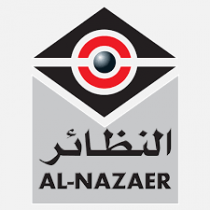Acrylic Resins Market by Solvency, Chemistry, Application, End-use Industry and Region - Global Forecast to 2025 - ResearchAndMarkets.com
The "Acrylic Resins Market by Solvency (Water-Based, Solvent-Based, and Others), Chemistry, Application (Paints & Coatings, Adhesives & Sealants, DIY Coatings, Elastomers, and Others), End-Use Industry, and Region - Global Forecast to 2025" report has been added to ResearchAndMarkets.com's offering.
The global acrylic resins market size is projected to reach USD 21.9 billion by 2025 from USD 16.8 billion in 2020, at a CAGR of 5.5% during the forecast period.
The demand for acrylic resins in emerging economies, such as APAC, MEA, and South America, is increasing owing to the growth in the construction industry and industrial activities. The potential health and environmental issues is a major restraining factor for the market. The stringent regulations regarding coating application is a major challenge for the acrylic resins market. The demand for acrylic resins is rising, owing to the growing demand for cost-effective and sustainable coating materials. This increase in demand for environment-friendly acrylic resins and the construction of green buildings provide growth opportunities to the market.
The hybrids segment is estimated to be the fastest-growing in the overall acrylic resins market in 2020.
Hybrid acrylic resins are generally a mixture of two functional monomers. These resins were created to combine the desirable properties of both resins to achieve the required functioning while offsetting their shortcomings. These are mainly used in coating applications due to their higher performance properties such as ultraviolet (UV) resistance, gloss retention, and improved adhesion.
Water-based is estimated to be the fastest-growing market in the overall acrylic resins market in 2020.
Water-based acrylic resins are effective as their solvent-based but also have a low environmental impact. These resins are used increasingly in the current period owing to their sustainable nature and easy formulation processes, their excellent durability, quick-drying times, and emission of low odor. Using solvent-based acrylic resins in confined spaces can be unpleasant or hazardous to the workers due to the evaporation of solvents, this drives the use of water-based resins.
In applications, the paints & coatings segment is estimated to lead the market in 2020.
Acrylics are utilized in a broad range of applications in the paints & coatings industry, right from architectural coatings to industrial coatings. Acrylic resins show good chemical, photochemical resistance, good colors, and gloss retention properties, are easy to handle, cost-efficient, and exhibit superior performance in a wide variety of applications such as roof coating, wall coating, interior, and exterior paints, and others.
Building & construction is expected to be the largest acrylic resins end-use industry in 2020.
Acrylic resins are used in manufacturing coatings, paints, adhesives, sealants, and other products that are mandatorily used in the construction sector. The growing number of residential and commercial construction in emerging economies and restoration of existing buildings in developed economies are driving consumption of acrylic resins in the building & construction industry. Acrylic resins have excellent adhesion, flexibility, and elongation, UV stability, carbonation resistance, and are environment friendly which are the major adoption factors for these resins in the sector.
APAC is projected to be the fastest-growing acrylic resins market during the forecast period.
The acrylic resins market in APAC is projected to register the highest CAGR in terms of both value and volume, during the forecast period. The building & construction market in APAC is driven by the growing construction industry, increased urbanization, industrial growth, and strong economic growth. The recent COVID-19 pandemic is expected to impact the global construction industry. COVID-19 led the construction industry into an unknown operating environment, globally. Government restrictions on the number of people that can gather at one particular place, severely impacted the industry. However, owing to government stimulus packages to counter the negative effects are expected to boost growth in a post-pandemic scenario.
Market Dynamics
Drivers
- Increased Infrastructural and Construction Activities
- Rising Demand for Coatings from End-Use Industries
Restraints
- Fluctuating Raw Material Prices Because of Volatility in Crude Oil Prices
- Potential Health and Environmental Issues of Solvent-Based Systems
Opportunities
- Growing Requirement of Environmentally Sustainable Formulations
Challenges
- Stringent Regulations and Restrictions
Companies Mentioned
- Aekyung Chemical Co. Ltd.
- Allnex
- Arkema
- BASF SE
- Berger Paints India Ltd.
- DIC Corporation
- DSM
- Fujikura Kasei Co. Ltd.
- Geo Specialty Chemicals
- Innotek Technology Ltd.
- Jotun
- Kamsons Chemicals Pvt. Ltd.
- Lubrizol
- Mitsubishi Chemical Holdings
- Mitsui Chemicals
- Momentive Performance Materials
- Nippon Shokubai Co.
- Rohm
- Showa Denko Materials
- SME Players
- Solvay
- Sumitomo Chemical
- Sun Polymers Inc.
- Synthomer (Omnova)
- The Dow Chemical Company
- Yip's Chemical Holdings Ltd.
For more information about this report visit https://www.researchandmarkets.com/r/r5pw8w
View source version on businesswire.com: https://www.businesswire.com/news/home/20210120005369/en/




